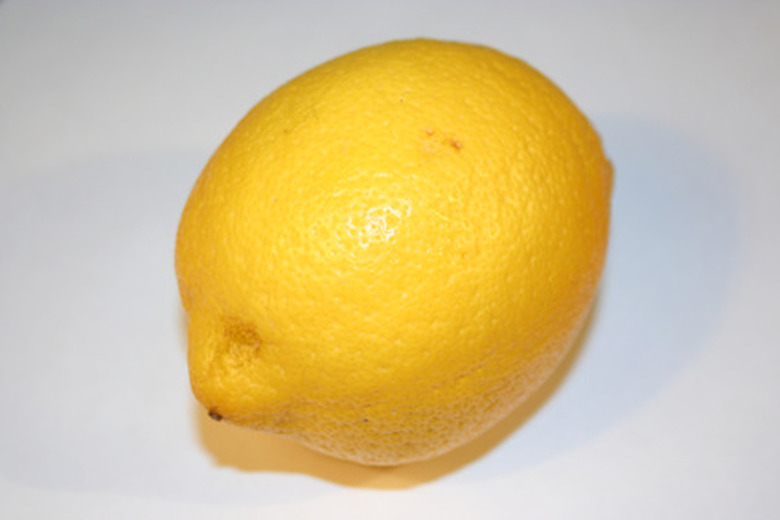How To Make Electricity For A Science Fair Project With A Fruit
A simple, yet impressive, science fair project for a youngster in elementary school uses lemons or other acidic citrus fruit to make a battery. Batteries generate electricity through a chemical reaction between two different metals, such as zinc and copper. When placed in an acid solution, electrons flow from one of the metals to the other, creating an electric current. A wire and LED connected to the metals allows the current to flow through them, lighting the LED. This project is simple to assemble and takes around 10 minutes. Then you can create posters to explain how the lemon battery works.
Step 1
Cut a small slit into the end of each lemon to hold a copper penny. Insert the 3/4 of a penny into each lemon. Stick a galvanized nail into the other end of each lemon.
Step 2
Attach an alligator clip lead to each penny. Attach the other end of each alligator clip lead to the galvanized nail in each lemon to join all the lemons together in a lemon-penny-alligator clip lead-nail-lemon chain.
Step 3
Attach an alligator clip lead to the galvanized nail on the end of the chain and another lead to the end penny. Connect those leads to the wires on the LED. The LED should light. If not, switch the clips on the LED wires.
Things Needed
- 4 lemons
- Sharp knife
- 4 copper pennies
- 4 galvanized nails
- 5 alligator clip leads
- 1 3.5 volt LED
TL;DR (Too Long; Didn't Read)
Use older pennies, made of solid copper, for your fruit battery to put out the most electricity possible.
Cite This Article
MLA
Whittemore, Frank. "How To Make Electricity For A Science Fair Project With A Fruit" sciencing.com, https://www.sciencing.com/make-science-fair-project-fruit-7708836/. 24 April 2017.
APA
Whittemore, Frank. (2017, April 24). How To Make Electricity For A Science Fair Project With A Fruit. sciencing.com. Retrieved from https://www.sciencing.com/make-science-fair-project-fruit-7708836/
Chicago
Whittemore, Frank. How To Make Electricity For A Science Fair Project With A Fruit last modified August 30, 2022. https://www.sciencing.com/make-science-fair-project-fruit-7708836/
